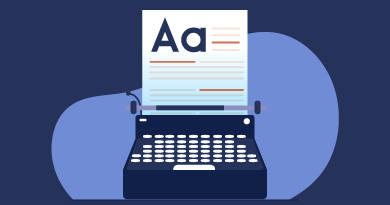How to become a blogger – Creating your own blog!

What? You are just a student so why should you start a blog? Well, the question should be how do you start a blog! I’ll answer both for you!
Do you have opinions about anything and everything but your friends won’t listen to them? Do you write poetry or short stories but Penguin won’t publish them yet? Do you want to solve problems people face and answer their questions but you can’t reach out to thousands of people? Well, you aren’t alone! I do too. So, let me put forth a simple solution which I also employed – write a blog! Share funny incidents from your life, things that make you happy, your opinions on the rules made by your college, your outrage on Padmavati movie row and increasing incidents of rape or religious intolerance, memorable moments from the latest season of your favorite TV series or stand up shows, and everything under the sun – in short give vent to all your emotions through a blog! Making money through blogging is the cherry on the cake!
Now that we have established the why, let’s address the how.
How to create a blog?
Setting up a blog has never been easier. Just a few clicks and you are good to go. With many options like Blogger, Tumblr, and Medium available, WordPress still makes an ideal choice for a blogging CMS. It is free to download, install, use, and modify. It allows you to give your blog any look you want. No, you don’t have to be a designer for it. It has hundreds of template themes which you can choose from. Apart from text, it supports images, audios, and video content.
Before starting a blog from scratch, you need to be familiar with certain terms that will be used during the process of creating a WordPress blog.
1. Domain name – It is the address where people can access your blog/website. To put it simply, just like your home’s address is used to find your home, a domain name is used to find your blog or website. For example, internshala.com and wordpress.com are domain names.
2. Sub-domain – It is a subset of the domain name. For example, in blog.internshala.com, blog is a subdomain on internshala.com and in www.wordpress.com, www is a subdomain on wordpress.com.

3. Theme – It is the design and aesthetic of your page. Themes decide how your blog will eventually look like. WordPress offers you a number of free themes – set your theme to match the functionality of your blog.
4. Plugin – It is a special tool that you can use to enhance the functionality of your blog. If you want to improve readers’ experience and manage your blog easily, you can leaf through these WordPress plugins.
5. Widgets – These allow you to modify your blog’s design and content without the knowledge of HTML and CSS.
So are you ready to start your own blog? Roll up your sleeves and get to work!
1. Go to WordPress.com – WordPress comes in two flavours – WordPress.com and WordPress.org. At the former, you don’t have to download software, manage a web server, or pay for hosting. All you need to do is create exhilarating content. This makes it a tailor-made choice for you; after all, free is the perfect price for broke college students.

2. Get Started – Click on the ‘Get Started’ button. You’ll be redirected to the first step of creating a free blog. Out of the four options presented – creating a blog, website, portfolio, or an online store, click on ‘Start with a blog’.
3. Give address to your site – While a domain name costs around INR 200 per month, WordPress.com allows you to have a free subdomain like test.wordpress.com. To create a site address for your blog, all you need to do is enter a keyword representing your blog or your name. Bloggers advise to use a two-three word address and not use a hyphen between the words.

Entering a keyword will exhibit all the available addresses. Choose the free option. If in future you feel the need to own a domain name, you can upgrade to the premium version.

4. Pick a plan – WordPress asks you to choose a plan for your blog. You can check out the features each plan offers right below the start button and pick one that matches your interest. The free plan, as WordPress itself recommends, is best for students.

This brings you to the last step of making a blog.
5. Create your account – Enter your email id, set a password, and you’re done! Go ahead and look at it in awe for a minute.

6. Customize your blog – What, you don’t like how it looks? Now, I don’t have a magic wand to change its view. But WordPress does! Quickly click on ‘Themes’ in the ‘Personalize’ section on the left side of the page. With no technical knowledge required, you can add colour to your blog, add a logo, change the font of posts, and add header and footer. You can also add plugins and widgets to enhance the design and functionality of your blog.

Created your WordPress blog already? Now you want me to help you write your first blog post? Alright! Alright! Head to our next article in this series – Writing your first blog post!
Already own a blog and want to taste the waters of the professional world? Apply to these cool content writing internships and write your own success story.



